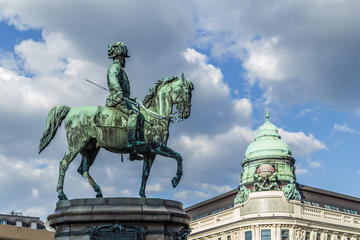Heldenplatz
TIME : 2016/2/22 9:54:01

Heldenplatz
A colossal piazza right at the heart of Imperial Vienna, Heldenplatz stretches out in front of the sweeping arcs of the Hofburg Palace, which was commissioned for the Habsburg Imperial Family in 1881. Constructed under the orders of Emperor Franz Joseph II as part of the city’s elegant Ringstrasse thoroughfare in the late 19th century, the square is dominated by two vast equestrian statues of Archduke Charles of Austria and Prince Eugene of Savoy, and completely surrounded by the Baroque beauty of Vienna’s most important landmarks.
The Habsburg dynasty, rulers of the Austro-Hungarian Empire, lived on this spot in various palaces from the 13th century until its demise in 1918; now the palace is home to several sublime Imperial collections in the Neue Burg, Sisi and art museums; the Imperial Apartments; the office of the Austrian President; the National Library; the Hofburgs’ private chapel; and the Augustinian Church, parish church of Vienna’s aristocracy. The Spanish Riding School is in the Winter Riding School and members of the Vienna Boys’ Choir perform at concerts in the Burgtheater.
Originally Heldenplatz was enclosed at its southern flank, but this now stands open; the Tomb of the Unknown Soldier is all that remains of the walls. In keeping with its role in the center of Viennese history, it was from a balcony overlooking the square that Hitler announced the Anschluss on March 15, 1938.
Practical Info
Heldenplatz is accessible 24/7. The museums are open from daily 9am–5.30pm (Jul–Aug 6pm). Take metro Line U3 to Herrengasse.
